The history of the Jeep Wagoneer is a little strange. Since it first hit the market for the 1963 model year, it has gone through a lot of evolution. For six decades, Jeep has utilized that name to mean different things, shifting between being its own model of SUV and being a high-level trim for a different SUV like the Grand Cherokee. The company firmly reestablished the Wagoneer as its own vehicle once again for the 2022 model year, and with the electric Wagoneer S reportedly on the way in the fall of 2024, it seems like Jeep has finally committed to this SUV after it being just a branding tactic at certain points in its history.
It is one thing to know whether the Jeep Wagoneer you are getting is its own vehicle or a package of another one. One is not necessarily a superior vehicle to the other, but as with any vehicle that has lasted as long as the Wagoneer has, there have certainly been better models than others. This could be because of their reliability, their advanced tech features, the engines that power them, or many other reasons. Let’s take a journey through the various generations of the Jeep Wagoneer over the last 60 years and see which models of the SUV stood above the rest and which ones made you wish Jeep would drop the Wagoneer name entirely. In order to determine the best and worst of the vehicle’s iterations, a careful curation of sources incredibly familiar with the pros and cons of the various Wagoneer models have been taken into consideration to bring to you the most consensus-based list possible.
The early Kaiser years
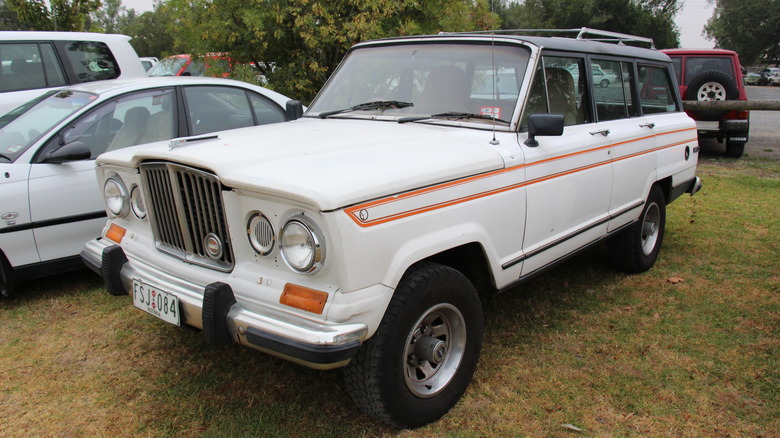
Sicnag/Wikimedia
The first platform for the Jeep Wagoneer, going all the way back to 1963, was the SJ, and it lasted in one form or another through the 1991 model year before it was discontinued. It is incredibly rare for one vehicle to be made on the same platform for that amount of time, and when it came to an end, it was the longest running vehicle made on a single platform.
What separates the various eras of the SJ Wagoneer model was exactly who was making them and what engines were being utilized. The original parent company of Jeep back then was Kaiser, and the standard issue engine for the Wagoneer was the 3.8L Tornado I6 that produced 140 hp and 210 lb-ft of torque. After several years, Jeep also utilized a Buick Dauntless 350 V8 engine as an option that produced 230 hp and 350 lb-ft of torque.
These were fine options, but the crown jewel of the Kaiser years was the Super Wagoneer. This was Jeep’s luxury edition of the 4×4 that featured a high-performance iteration of AMC’s 327 V8, the lesser of which came as an option for the base models. Not only could this reach 270 hp, but it came with features we now take for granted, like air conditioning and power steering. Super Wagoneers were only produced through the 1969 model year, but if you were to get your hands on any from this early Kaiser era, this is the way to go.
[Featured image by Sicnag via Wikimedia Commons | Cropped and scaled | CC BY 2.0]
The AMC years
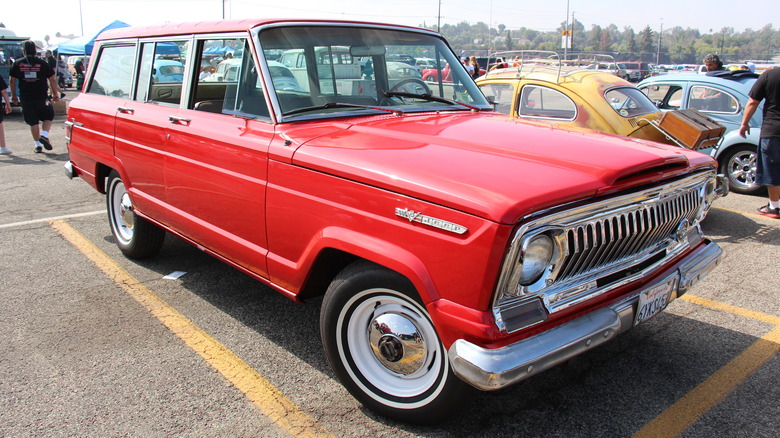
Sicnag/Wikimedia
Ownership of Jeep transferred over to AMC in 1970, and shortly after, the company started making its presence known even more on the Wagoneer. Starting with the 1972 model year, the Tornado I6 engine was replaced by a 4.2L AMC I6 as the standard option. Despite the larger displacement, this new engine was only able to generate 110 hp and 195 lb-ft of torque. The Buick Dauntless V8 was also replaced, and instead, the option was a 5.9 L AMC V8 with an output of 175 hp and 285 lb-ft of torque. 1972 was when the Society of Automotive Engineers changed the way horsepower was rated, dropping the listed numbers dramatically across the board. This was particularly bad for V8 engines.
Combine that with the EPA being established, the passing of the Clean Air Act of 1970, and the oil embargo in 1973, and car companies were forced to reduce emissions dramatically and figure out ways for their vehicles to be more efficient, hindering performance. The 1970s ended up not being very kind to most vehicles.
The 1975 model year introduced the Jeep Cherokee, effectively a two-door version of the Wagoneer built on the same SJ platform. Jeep put more of a broad focus on the Cherokee and made the Wagoneer more of an upscale luxury product, with the aforementioned AMC V8 as its standard engine. However, in 1979 it was changed from a four-barrel carburetor to a two-barrel, hindering the horsepower even more. Despite design upgrades, this wasn’t the best time for the Wagoneer.
[Featured image by Sicnag via Wikimedia Commons | Cropped and scaled | CC BY 2.0]
The XJ platform
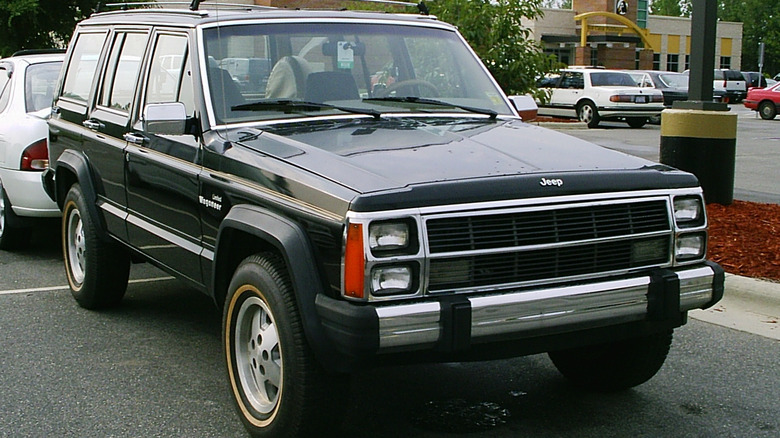
CZmarlin/Wikimedia
The SJ platform would be offered through the 1991 model year as the Grand Wagoneer, but for 1984, Jeep decided to move the Cherokee onto a newer, smaller platform called the XJ. As the Wagoneer was essentially an upscale package of the Cherokee at this point, the Wagoneer was now made on the XJ platform as well. When it comes to the life of the Wagoneer, this XJ era from the 1984 model year through 1991 seems to be what people consider the apex of what the Wagoneer has to offer. Those first few years in the 1960s were desirable for its power and rare ability for all-wheel drive. Although the new XJ Wagoneer had a perfectly fine new 2.5L AMC I4 as the base-level, generating 105 hp and 132 lb-ft of torque, it still fell behind those early years.
Instead, the major selling point of the XJ was its efficiency and reliability. For one, this new model was about a half-ton lighter than the SJ and two feet shorter. The smaller I4 engine was perfectly commensurate to the new frame, though the 4.0L engine that arrived in 1987 is when the XJ really took off. By this point, Jeep and other car companies had gotten a handle on how to make their vehicles more efficient after the tumultuous 1970s, and the Wagoneer reflected that. It also was subject to a lot less mechanical issues than its larger predecessors had. These still weren’t the most reliable vehicles ever built, but for the Wagoneer, this was the prime era.
[Featured image by CZmarlin via Wikimedia Commons | Cropped and scaled | CC0 1.0 Universal]
The ZJ platform
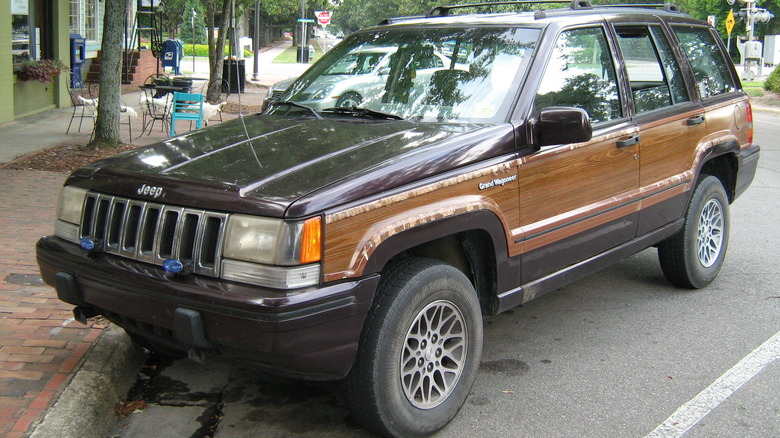
CZmarlin/Wikimedia
Jeep would continue making the Cherokee after the 1991 model year, but it retired the Wagoneer name after that, on both the XJ and SJ platforms. Two years later, it would get a revival on a whole new platform. However, the Wagoneer name still wouldn’t be used. Instead, it would just be the Grand Wagoneer name that made its way back on the ZJ platform.
Once again, this naming pattern would not be for its own model, as the ZJ platform was being used for the Grand Cherokee. Jeep was using the Grand Wagoneer name as the top-of-the-line trim available for the Grand Cherokee. However, it did this for just the 1993 model year. After that, perhaps as a way to streamline and not create as much confusion between the Cherokee and Wagoneer names, the Grand Wagoneer name would be dropped for nearly 30 years.
On the one hand, that makes the 1993 Jeep Grand Wagoneer something of a rare item, but that doesn’t necessarily mean it needs to be a sought after vehicle. It’s a fine one, coming standard with a 5.2L Magnum V8 engine that could produce 220 hp. However, this engine was also an option for other trims of the Grand Cherokee, so if that was the power you wanted, you could get it at a lesser price than the Grand Wagoneer. There are positive reviews of the SUV out there, still working well after many years, but even those write-ups are more than a decade old. Gambling on a 30-year-old vehicle is a tricky proposition, so it may not be your first pick when there are other options out there.
[Featured image by CZmarlin via Wikimedia Commons | Cropped and scaled | Public Domain]
The current generation
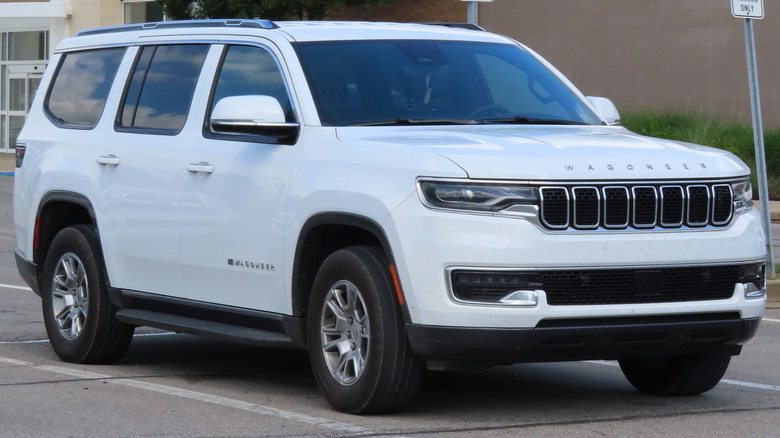
MercurySable99/Wikimedia
After the discontinuation of the 1993 Jeep Grand Wagoneer, the company would not use that branding again until the 2022 model year, almost 30 years later. The good news is the Wagoneer is now its own vehicle again and not a luxury package option for a Cherokee. The two are not even built on the same platform anymore either, as the Wagoneer and Grand Wagoneer are built on the new, much larger WS platform.
The previous eras of the Wagoneer were far more in line with a compact SUV like a Toyota RAV4 in terms of size than this new generation. A 1984 Wagoneer on the XJ platform was about 186 inches long. Meanwhile, this new model is about 215 inches long. That near two-foot expansion definitely alters the kind of people who are looking to get a vehicle like this. With that extra size — along with improved modern technology — comes extra power, as a 5.7L V8 powers this to the tune of 392 hp.
What hasn’t improved all that much is the Wagoneer’s reliability. The 2022 model was given a fair rating of 65 out of 100 by J.D. Power. That sounds like it would be fine, but considering that’s 15 points behind the similarly sized Chevrolet Tahoe and GMC Yukon, it makes you wonder whether the price increase of $4,000 to $7,000 for the Wagoneer is really worth it. As for the brand new 2024 model being made, it’s too soon to make a solid judgment on its reliability.
[Featured image by MercurySable99 via Wikimedia Commons | Cropped and scaled | CC BY-SA 4.0]
Why these model years were chosen
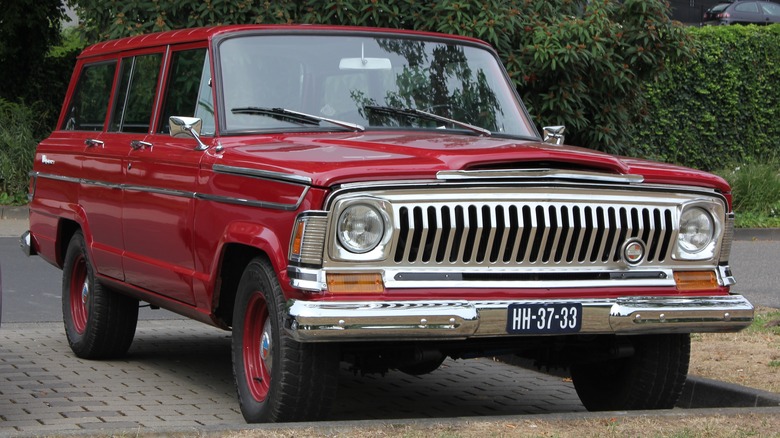
Lothar Spurzem/Wikimedia
In the end, there are several clear high points in the life of the Jeep Wagoneer: the early SJ years and the XJ era. Outside of that, each model of Wagoneer and Grand Wagoneer — be they their own vehicle or a trim for the Jeep Cherokee — has their highs and lows. In order to come to this conclusion, a variety of different sources were pulled from to get the best consensus information on the many different iterations of the vehicles as possible. Because the Wagoneer has been around so long and has meant different things over the course of six decades, it was imperative to look to publications such as Motor Trend, Top Speed, Car and Driver, Autotrader, and Endurance for the specifics of each different era. To nail down each model’s specifications, the actual brochures from various model years were consulted for the proper numbers.
For the modern era, sources such as J.D. Power, Edmunds, and Cars.com were utilized to get both professional and customer perspectives on what the Wagoneer has to offer, specifically in terms of the SUV’s reliability. Beyond all of this, a clear picture of the full life of the Wagoneer needed to be painted in order to showcase its ups and downs, which meant pulling from every single era of its life in some way. Although comparing a Wagoneer that was its own large SUV to a luxury trim of a Cherokee is somewhat comparing apples to oranges, the Wagoneer name applies to both, meaning that each needed to be covered.
[Featured image by Lothar Spurzem via Wikimedia Commons | Cropped and scaled | CC BY-SA 2.0 DE]